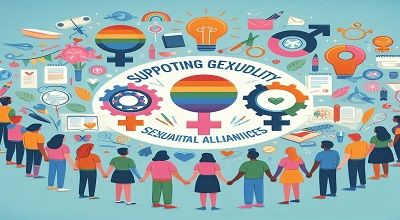Supporting Gender Sexuality Alliances
Supporting Gender Sexuality Alliances (GSAs) in educational institutions is a critical step toward fostering a safe, inclusive, and affirming environment for all students, regardless of their sexual orientation, gender identity, or expression. GSAs are student-led organizations that aim to provide a supportive environment for lesbian, gay, bisexual, transgender, and queer (LGBTQ+) students and their allies. Here are several ways educational institutions can support GSAs:
1. Provide Official Recognition and Support
- Recognize GSAs as official student organizations. This legitimizes their presence and ensures they have access to school resources like meeting spaces and communication channels for events.
- Offer support through faculty advisors who can guide students in organizing meetings and activities and navigating challenges.
2. Foster a Safe and Inclusive Environment
- Implement and enforce anti-bullying policies that explicitly protect LGBTQ+ students from harassment and discrimination.
- Conduct training sessions for staff and students on LGBTQ+ issues to promote understanding and inclusivity.
3. Promote Awareness and Education
- Include LGBTQ+ topics in the curriculum where appropriate, such as in health education, social studies, or literature courses, to increase awareness and promote acceptance.
- Organize school-wide events, like assemblies or guest speaker sessions, to educate the school community about LGBTQ+ issues and the role of GSAs.
4. Facilitate Access to Resources
- Provide GSAs with access to educational materials and resources on LGBTQ+ issues, including information about mental health support and advocacy organizations.
- Connect GSAs with local LGBTQ+ organizations for partnership opportunities, resources, and community involvement.
5. Encourage Participation and Leadership
- Encourage students of all sexual orientations and gender identities to participate in GSA activities to build allyship and a broader community of support.
- Support leadership development within GSAs by offering leadership training or opportunities for GSA members to organize and lead school-wide initiatives.
6. Ensure Privacy and Confidentiality
- Respect the privacy of GSA members, especially concerning their sexual orientation, gender identity, and participation in the group.
- Provide a confidential environment where students can express themselves and share their experiences without fear of outing or retaliation.
7. Advocate for Policy and Cultural Change
- Support GSAs in advocacy efforts within the school and broader community to promote policies that protect LGBTQ+ rights.
- Encourage a school culture that celebrates diversity and actively challenges homophobic, transphobic, and discriminatory attitudes.
Conclusion
Supporting GSAs requires a multifaceted approach that involves policy, education, and community engagement. By taking these steps, educational institutions can play a pivotal role in supporting LGBTQ+ students, fostering a culture of acceptance and respect, and preparing all students to thrive in a diverse society.
